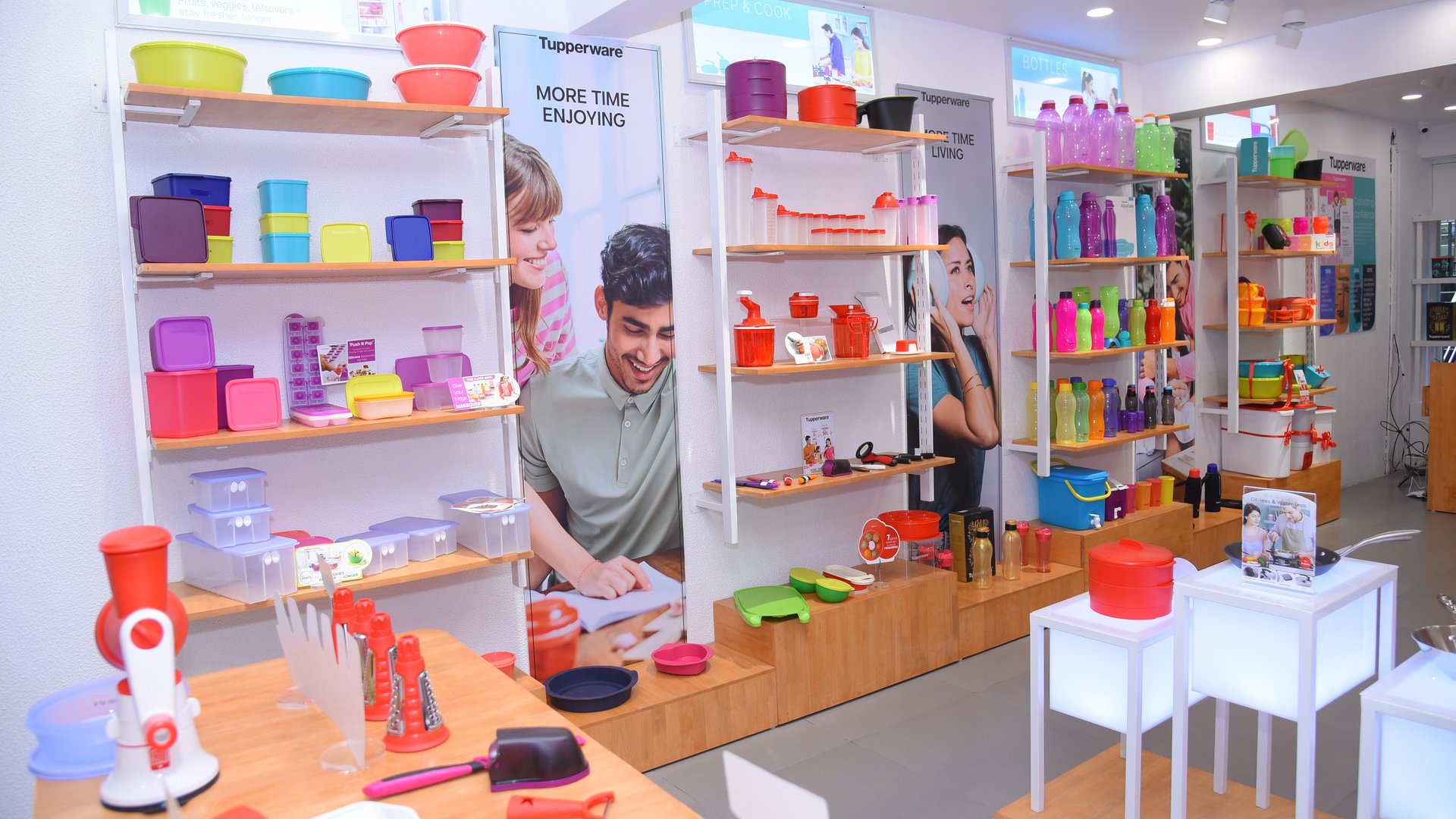After over two decades of door-to-door sales, Tupperware plans more stores in India
For home-and kitchenware maker Tupperware India, the economic slowdown is an opportune time for expansion.


For home-and kitchenware maker Tupperware India, the economic slowdown is an opportune time for expansion.
With real estate prices under pressure due to the slump, the wholly-owned arm of US-based Tupperware Brands Corp now plans to open 100 stores in India during 2020. Globally, India is the 16th largest market by revenue for Tupperware Brands.
“Most businesses struggle to grow during an economic slowdown. But it is during a slowdown that the stressed realty sector offers good (retail) locations at affordable prices. We are looking to leverage this opportunity as we open more stores in coming months,” said Deepak Chhabra, managing director, Tupperware India.
Operating in India since 1996, Tupperware products were sold in India through salesmen who went door-to-door for over two decades. In July last year, the company opened its first India store in Delhi. Since then, it has opened 49 more outlets in Mumbai, Pune, Bengaluru, Amritsar, Jaipur, and Patna, among other cities.
In August last year, Tupperware also started selling through e-commerce portals like Amazon, Flipkart, and Paytm Mall. Last month, it launched its online retail website. “As of now our own online store is more of a means to connect with our customers rather than generate sales,” said Chhabra.
In an interview with Quartz, Chhabra talked about what’s next for Tupperware in India, product innovation, and tackling competition. Edited excerpts:
What makes you so bullish about the Indian market amid a slowdown?
A slowdown offers brands the best opportunity to expand. The biggest investment one has to make while opening a store is in real estate. That is cheap during a slowdown. A lot of players facing profitability issues vacate prime retail space. Owners are looking to rent out such spaces, and brands looking to expand can get access to good locations at affordable prices during a slowdown.
What was the reason for Tupperware to move beyond direct selling and adopt a multi-channel distribution strategy?
We are late in stepping into retail sales. Going by dynamic consumption patterns in a fast-changing marketing environment, there is a need for our brand to be present wherever our consumers are. Every customer does not buy the same way. If a customer wants to buy your product but faces difficulty in finding it, she will settle for some other brand. And if she likes that brand, you have lost a customer forever.
With the brand now present across distribution channels, Tupperware may end up targeting the same set of customers at different touchpoints? How do you tackle this?
We strongly believe there are a different set of consumers across distribution channels. If you are present in one channel and not there in another then as a brand you are missing on a significant chunk of customers. I agree, there is a little bit of cannibalisation across distribution channels but the opportunity to discover new customers are more.
What is Tupperware’s online strategy?

Our strategy on e-commerce is to have a catalogue, which is, kind of “go and grab.”
People are short on-time and digitally, too, they are looking for products that can be demonstrated quickly through video. The online consumer is also looking for products that are discounted.
As of now, online selling in India is more about discount-led buying rather than convenience. For e-tail, our exclusive product range, is available at a discounted price of up to 30%. However, in case of the same product being sold both offline and online, we maintain price parity.
Online sales channels are flooded with counterfeit products. How do you navigate this challenge?
The problem of counterfeit products was big when we were not selling online ourselves. There were illegal sellers who would tweak product features and sell their wares online as Tupperware products. With Tupperware selling on e-commerce platforms now, we have been able to get rid of a large chunk of such sellers.
How has the company gone about engaging its salespersons?
While getting into new distribution channels, we made a conscious decision to not drop our direct salespersons. We integrated them into our physical stores. For us, working with the same set of people is easier rather than adding new individuals.
What is Tupperware India’s approach towards product innovation?
We have a loyal consumer base courtesy our design capability and ability to deliver solutions for problems that people face in the kitchen. The company is a bit slow in turning out a product but it has a larger life. Our design centre in Belgium works for months on a new product. Our product moulds are made in Australia to the exact precision, which is difficult to copy. Tupperware is conscious that it has to demonstrate and communicate to consumers that the product may look similar to others but there are differences in utility and quality.
How do you navigate competition particularly from me-too brands and a number of kitchenware ranges promoted by celebrity chefs?
Most of the players in the segment are mass, not premium brands. Tupperware does not want to play in the mass segment for the next five to seven years. In the premium segment, there are 35 million households to be targeted. That translates into 140 million people. It is a huge market and we are nowhere close to tapping this market fully as of now. Even if we manage to cover a major chunk of this premium market in the near future, we would be doing half-a-billion dollar sales. There is no need for us to get into the mass segment. Kitchenware range launched by celebrity chefs are too small, they cannot build strong brands.